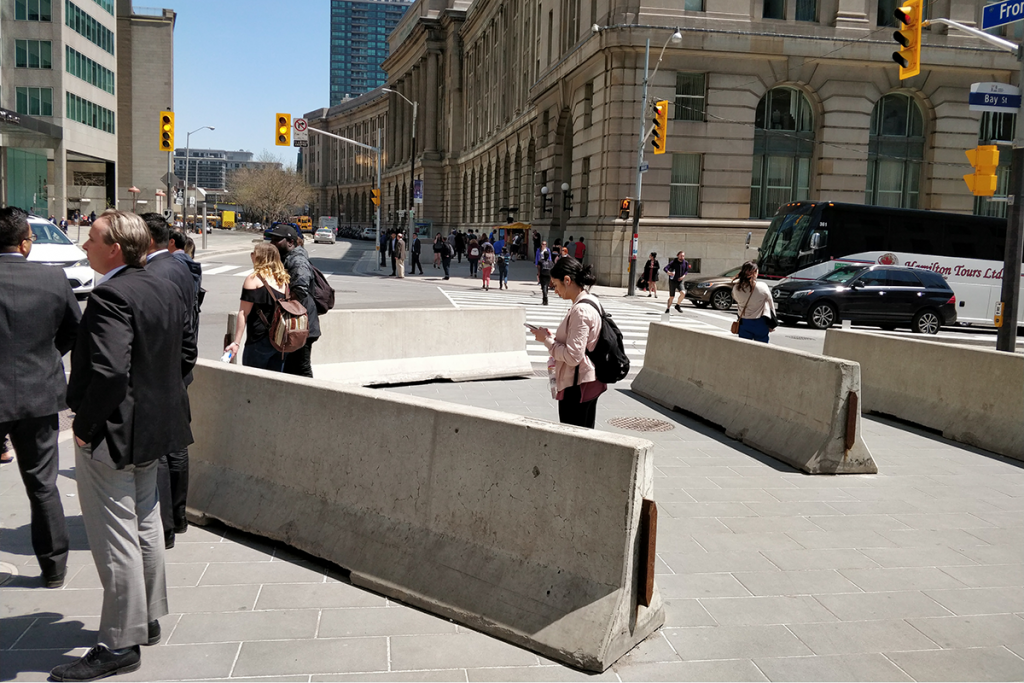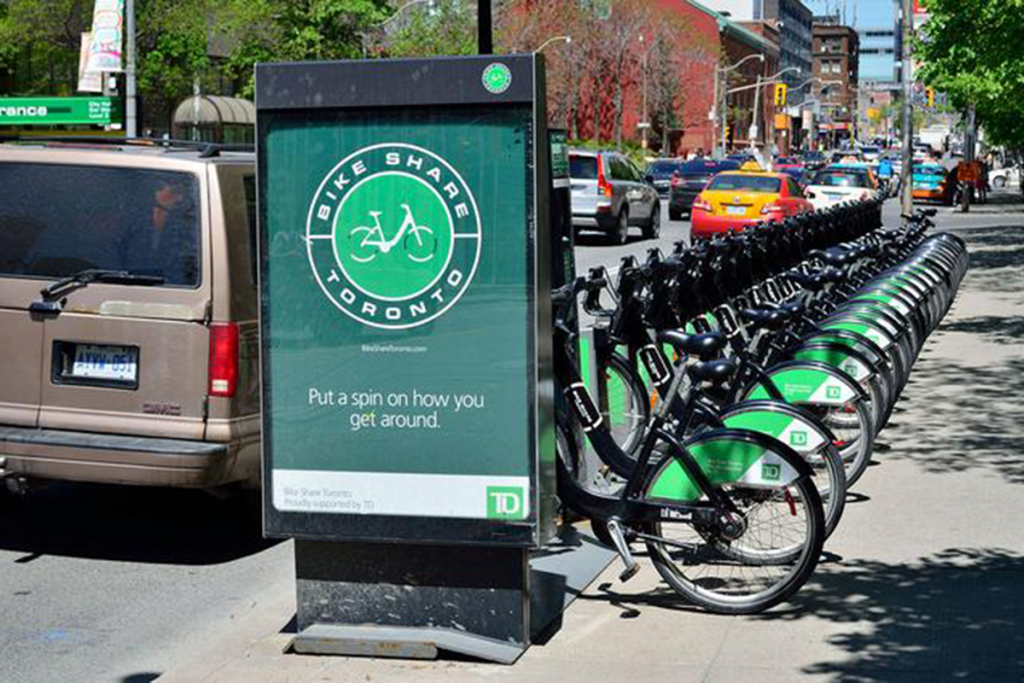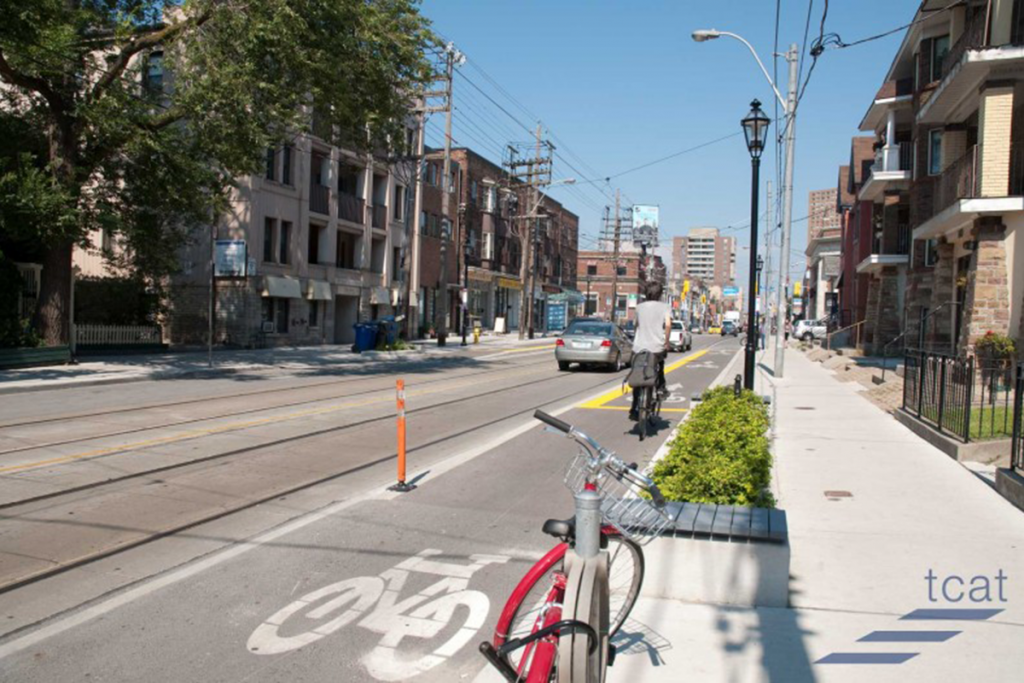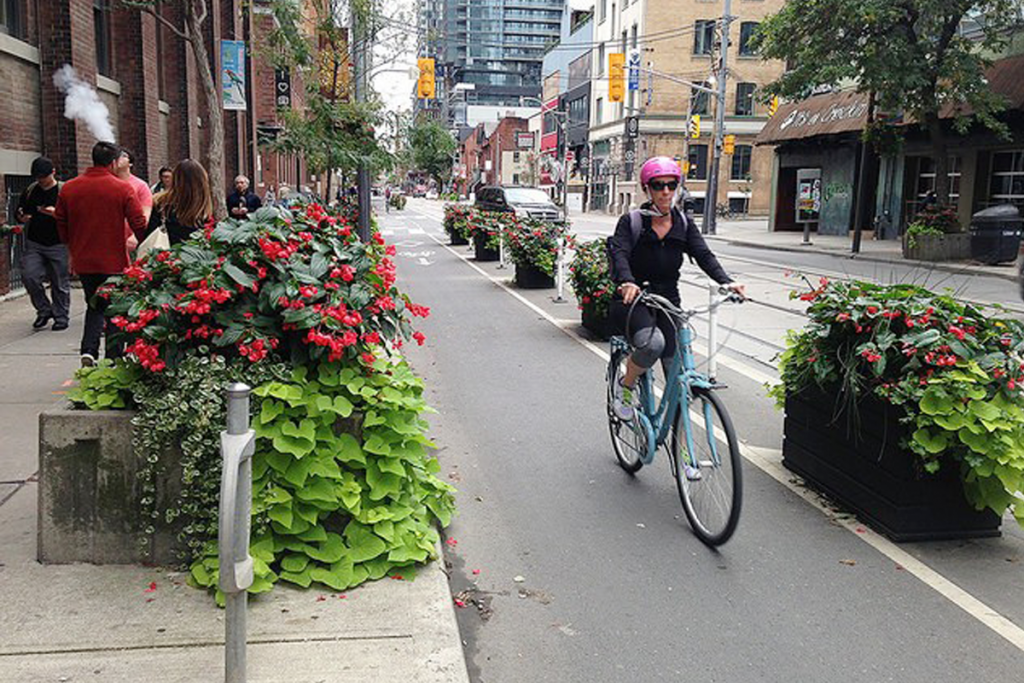
23 May 8 80-Proofing Toronto’s Union Station
On a warm April Monday, 10 innocent people died as a man in a van jumped the curb on Yonge Street north of downtown Toronto and began mowing down pedestrians.
I am constantly reminded of that reality every day as I walk between work and Union Station because, in less than 24 hours after the attack, Toronto Police had placed these large concrete barriers all around the station as a security measure in response.
 The police’s handling of the incident was beyond commendable. And the instinct to protect and improve safety around one of the busiest areas of the city quickly is completely understandable. But, now a month after the attack, I can’t help but think there must be a better way to make our city safer without turning our streets and public spaces into such unwelcoming environments.
The police’s handling of the incident was beyond commendable. And the instinct to protect and improve safety around one of the busiest areas of the city quickly is completely understandable. But, now a month after the attack, I can’t help but think there must be a better way to make our city safer without turning our streets and public spaces into such unwelcoming environments.
This stretch of Front Street, between Union Station and the Royal York Hotel, is arguably one of the most important public spaces in the city. Union Station is the busiest regional transportation hub in the country, and the Royal York Hotel is a heritage and cultural icon in the downtown core (when the Queen came to visit, this was where she stayed). This street would often be the first impression of the city for those who visit Toronto by train. It is no wonder that the city has invested so much time and money in the past decade into beautifying the street and the station, and this work is still ongoing.

With one senseless act of an individual, everything has changed. These long, concrete barriers are placed all along the edges of the sidewalks, separating vehicular traffic from pedestrians on a street that is designed initially to be curbless and barrier-free. Pedestrian movements are restricted, and together with the ongoing construction in front of Union Station, this streetscape that previously showed promise is now once again an upsetting eyesore.
While these barriers were easy to transport and deploy in the wake of a horrific attack, this is not a long-term solution. A city that is great for an 8-year-old and an 80-year-old needs to be both safe and welcoming. These barriers have now become symbols of fear and control, visual cues to passersby of potential danger, but they don’t have to be. After all, safety in public spaces is both a physical quality and a perception. With some tweaks and changes, Front Street and the Union Station plaza can again become a beautiful place that is and feels safe for everyone.

Photo credit: mmcité (Landezine)
Be creative with the form of “barrier”
Instead of lining our streets with concrete barriers, why not install more benches and seating? This stretch of Front Street is very different compared to Yonge Street in North York because vehicles are already travelling at a relatively low speed, and there are taxi stands on both sides of the street acting as a kind of buffer. There are also currently no seating spaces outside of Union Station, and people resort to sitting on the steps or the ledge. Benches between the vehicle lane and the sidewalk would not only provide a comfortable place to sit and people-watch, they can also provide a kind of physical barrier to prevent cars from entering the pedestrian space.

Photo credit: Flickr (NOW Toronto)
Placing more bike stands and expanding the current Bike Share station would have the same effect.

Photo credit: Jacklyn Atlas (TCAT)
Planters and street trees are also “soft” buffers with the benefits of colour and nature added to the street.

Photo credit: John Greenfield (Chicago Reader)
What’s going on in front of Union Station today must not become the new normal. We as citizens deserve better public spaces. When the spaces we share are under threat, we must remember that when our streets and plazas are filled with life and joy, we are stronger as a city.



